Fly on the wall – Our first hackathon
Straight after the HPCC Systems Community Day Summit last October, I headed over to Kennesaw State University, College of Computing and Software Engineering with a group of HPCC Systems colleagues, for the launch of their first hackathon. It was our first hackathon too, so we were excited to meet the students and get started. Our chosen task was to build models to address potential challenges which may be faced by autonomous vehicles.
The event started with a welcome meeting and presentation. There was quite a buzz in the lecture theatre which was filled with students eager to meet their mentors and find out more about their challenge.
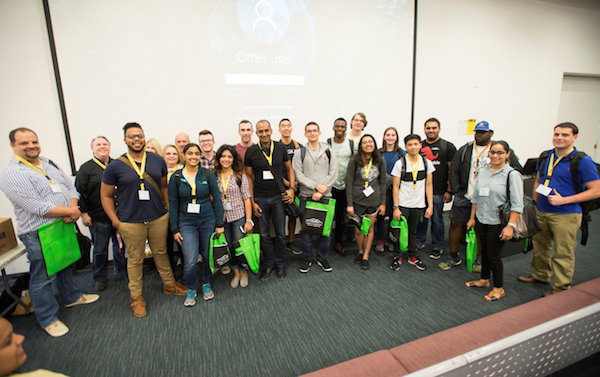
Our 4 teams met in the HPCC Systems CSE Lab sponsored via our academic program. It would have been hard to find a more perfect place to gather and discuss our challenge. The students would spend the weekend here, working in their teams, developing their ideas into a solution with the support of our mentors from the HPCC Systems open source project.
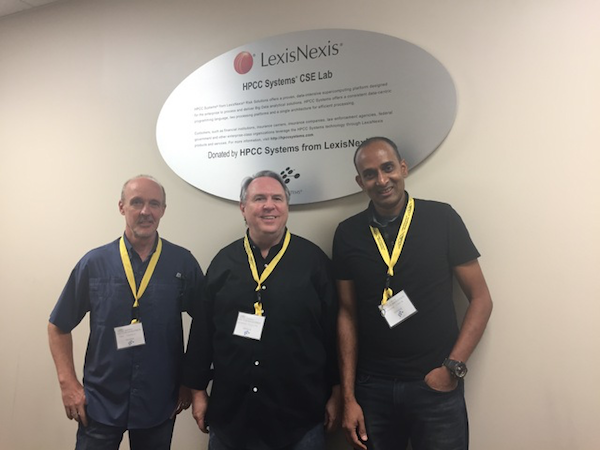
Our hackathon mentors outside the HPCC Systems CSE Lab at KSU:
Dan Camper, Richard Taylor and Arjuna Chala
We knew some of the students had used HPCC Systems before, but for others, this would be their first experience of using the platform and coding in the ECL language. As part of their preparation for the hackathon, students were asked to download HPCC Systems and run though some basic training, documentation and tutorials. However, a weekend isn’t much time and all students would want to be firmly focused on their ideas and solutions. So, our mentors were ready to help students make light work of getting started to allow them to get to the meat of the challenge fast.
We gave students details of the publicly available data we wanted them to use (http://kolntrace.project.citi-lab.fr) and started a discussion which would prepare them for:
Task 1: Find out what you can about the shape of the data
Completing this task would prepare them for being able to meaningfully mine the data. The mentors mentioned a few things they had observed and thought about:
- The number of unique vehicles
- Max/min of x y positions
- Prove there isn’t any invalid data
- Does every vehicle have a location and speed entry for every second of the day? Are there any gaps?
- Are there any negative numbers?
- Max/min speed and conversion from metres per hour to kilometres etc
- Time conversion to clock time (human understandable)
Having provided the students with a starting point, they needed to come up with some of their own ideas to help them complete:
Task 2: Identify values which would provide valuable information for an organization wanting to assess the needs of a community where autonomous vehicles might be deployed
The mentors shared some ideas of values a data scientist might identify such as the following trip based values:
- Identify what a trip is.
- How many trips can be identified?
- Statistics for a vehicle and all vehicles
- Min/max/mean trip duration
- Actual clock time (start and end)
- Can you, for example, identify types of trips by aggregating and classifying the data? For example, rush hour, school run, delivery vehicles.
And these environment based values:
- Where are the streets?
- Can you infer stop signs/lights?
- Can you infer the home base of the vehicle?
- Can you identify the commonly used roads (and congestion)?
Using HPCC Systems, each team would be able to carry out the ETL process that is required to make sure data is ready for analysis. Using the HPCC Systems Machine Learning Library, they would be able to translate and aggregate the data to build learning models from the data points collected.
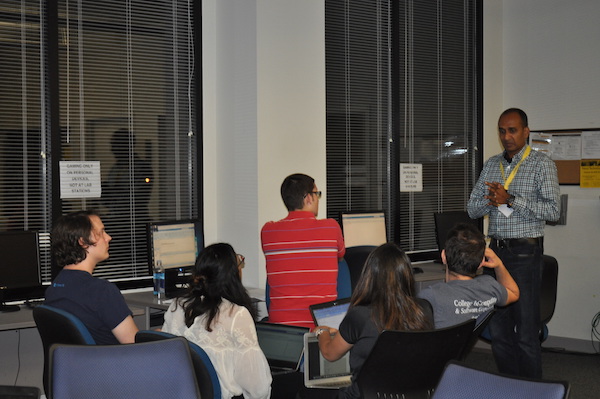
The mentors, as judges, had a clear idea of how to rate each team’s results. They had already decided that while they would look at the final code and results, they would also give credit for the methodology used. Specifically, they would be looking to see whether each team’s original hypotheses proved true or false.
Having spent the whole weekend with the students, the mentors were well placed to see, first hand, how innovative each team’s ideas were, how skilled they were at recognizing big data patterns and how well each team worked together towards their common goal. There was a lot to do but there is always time for fun!
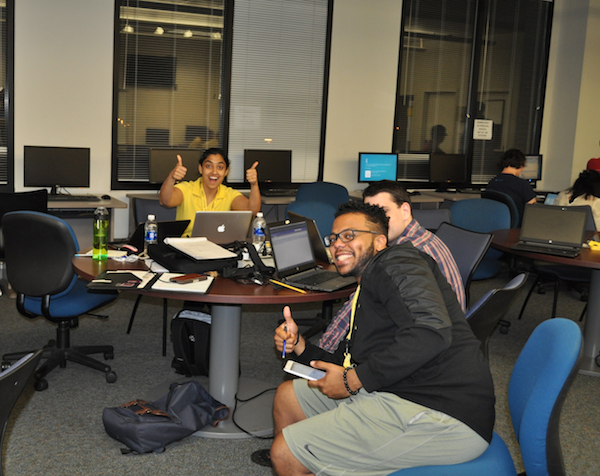
At the end of the hackathon, each team made a presentation about their ideas and results. The quality of their presentation was also factored into the scoring.
With the judging over, lunch time provided the perfect opportunity to sit with the students and chat informally about their hackathon experience. They had all worked so hard and said how much they had enjoyed the event. For us, the hackathon provide a great opportunity to spend some quality time with a group of extremely able and motivated students interested in HPCC Systems and data science.
If you’ve ever attended a hackathon, you will know that it isn’t an event for the faint hearted. It is a very intense experience, requiring focus and teamwork over an extended period of time with few breaks. The KSU students on our teams were extremely hard working and the judges had a hard time when it came to picking the winners.
Having made their choice, it was time for the first Kennesaw State University CCSE Hackathon awards ceremony presented by Jon Preston, (Interim Dean, College of Computing and Software Engineering) and Dawn Tatum, (Internship Coordinator, College of Computing and Software Engineering and Chair of the CCSE Hackathon).
Congratulations to the HPCC Systems third place winning hackathon team:
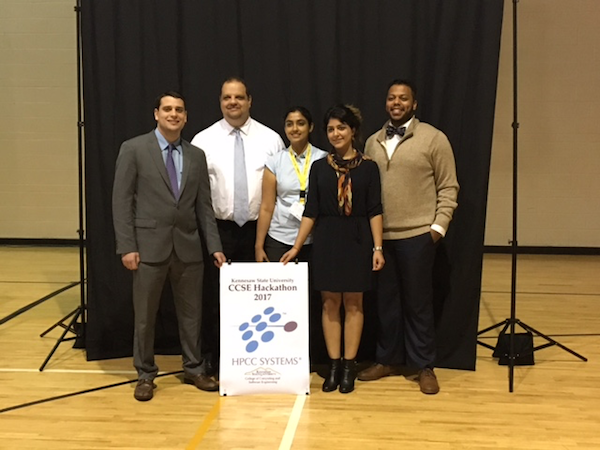 HPCC Systems 3rd place winning team:
HPCC Systems 3rd place winning team:
Neal Hughart, Daniel Mojahedi Settisara, Tala Emami, Srivarna Janney, Matt Butler
Congratulations to the HPCC Systems second place winning hackathon team:
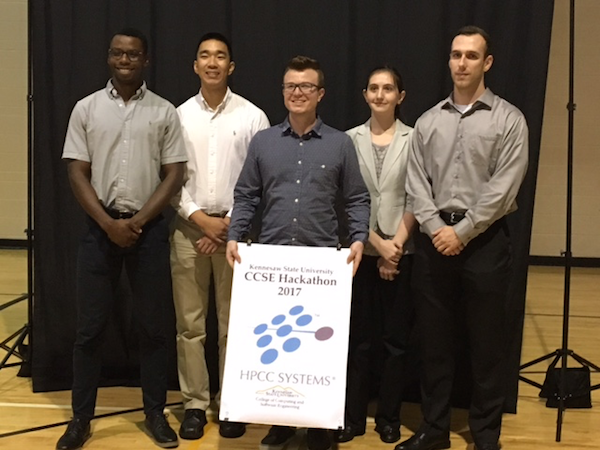 HPCC Systems 2nd place winning team:
HPCC Systems 2nd place winning team:
Jordan Burnett, Gerald Tan, Blake Howe, Amanda Norris, Andrew Hubeli
Congratulations to the HPCC Systems first place winning hackathon team:
 HPCC Systems 1st place winning team:
HPCC Systems 1st place winning team:
Alex Drennan, Anokhee Jandhyala, Sukanya Pant, Redouene Madjek, Joshua Owens
It was a proud moment for us to watch everyone who had produced so much good work in such a short space of time receive their awards. Thanks and congratulations to the students on all our teams who did a fabulous job of meeting our hackathon challenge. It was a privilege to meet them all and a pleasure to support them while they worked towards achieving such great results.
I was hoping to attract a Kennesaw State University student on to the HPCC Systems intern program for the first time in 2018 and I wasn’t disappointed.
Congratulations to Matt Butler from our 3rd place Hackathon team for submitting an excellent proposal!
Matt will be implementing a standard ECL math library for us during his internship.
Thank you to Kennesaw State University, College of Computing and Software Engineering for asking us to take part in their first Hackathon. Special thanks go to Jon Preston, Dawn Tatum and Michael Lindsay for making us so welcome and holding a well run, exciting and fun event.
Dawn and Michael recently visited the LexisNexis office in Alpharetta, GA, to present us with an award for sponsoring their hackathon, which Arjuna Chala accepted on behalf of the HPCC Systems team:

Arjuna Chala, Senior Director of Operations, HPCC Systems, receiving our 2017 CCSE Hackathon Sponsors Award presented by Dawn Tatum and Michael Lindsay from Kennesaw State University, College of Computing and Software Engineering
While this may have been the first hackathon for both of us, I expect it won’t be the last but the first of many!
And finally…
Thanks also to the KSU Owls for playing a home match that weekend against the Texas Southern Tigers. What a perfect opportunity for a British visitor to notch up another couple of firsts. It was the first time I had watched a live American Football game and experienced tailgating.
How did it go? They won 48-3. Go Owls!
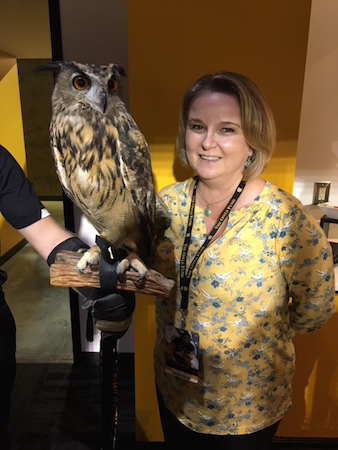
Lorraine Chapman and the KSU Owls mascot, Sturgis
